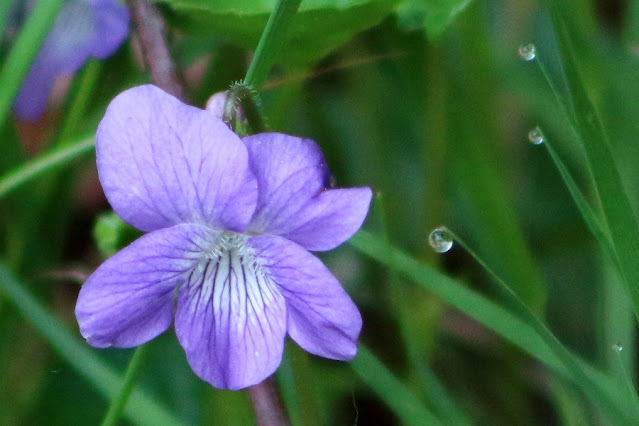 |
| Pickerel Frog |
It blended in so well with its surroundings that I never would have seen it if it didn't leap out of my way as I approached.
It was down near the lake where there are lots of good things to eat, but that's also where our resident garter snake hangs out, so it better be on high alert. Pickerel frogs are considered poisonous as their skin excretes a toxin that is harmful to humans, cats and dogs, other amphibians and some snakes, but the garter snake has developed immunity to the pickerel frog's toxin [Amphibian Planet]. Dogs often learn about amphibian secretions from toads which have a more mild toxin, but the dog still ends up with a foaming mouth. Pickerel frog secretions can be fatal to small animals, but to humans and pets it's usually just irritating to the skin and mucous membranes.
Dragonflies are becoming numerous as they emerge from the depths of the lake as it warms.
 |
| Common Brown Baskettail (Epitheca cynosura) |
I recently learned that dragonflies are actually considered aquatic insects because they spend most of their lives in the water. They live as nymphs in the lake for a few months or even a few years depending on species. Then most only live for a few weeks as flying dragonflies to mate and lay their eggs back in the lake. Their mating process is fascinating - a topic for another day.
Another small animal I saw this week was a Dock Spider.
 |
| This little guy was hanging out on our screen. I think it looks like a pirate. |
I've never seen such a little one. Usually I find huge ones on the dock or the boat come mid summer.
Now on to the flowers - the Lady's-slippers are out.
 |
| Pink Lady's Slipper |
While I was enjoying this one I noticed a dry, brown stalk coming out from its base. It's last year's flower which is now a seed pod - an empty seed pod. Inside it would have been many, maybe hundreds, of tiny seeds.
 |
| The now-empty seed pod. |
The seeds have presumably been released on the ground so perhaps there will be a whole patch of lady's-slippers here in a few years.
Around the lake, the white blossoms of the serviceberry are gone, replaced with chokeberry growing all along the shoreline.
 |
| Black Chokeberry (Aronia melanocarpa) |
You've likely heard about the smoke in the upper atmosphere that was blown here from fires in Canada. Between the smoke and the pollen there have been some pretty impressive sunsets.
It looks like we're going to have nice sunsets all weekend; let's enjoy this beautiful weather as we remember what this long weekend commemorates. There will be a memorial service at Oakland Cemetery on Monday morning at 8:00 and all are welcome.
 |
| A prior Memorial Day Ceremony at Oakland Cemetery. |




































